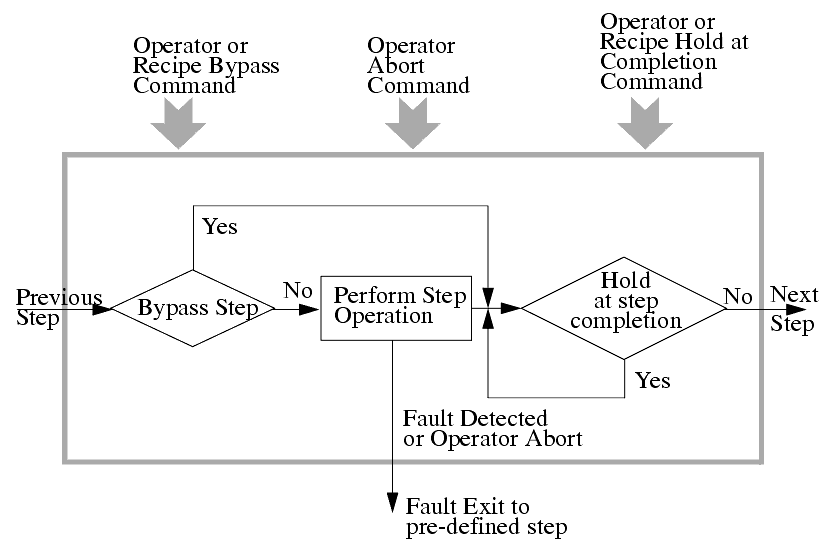6.2 BATCH PROCESSING
������������The nature of Batch processes,
- batch processes allow more than one type of product to be processed simultaneously, as long as the products are separated by the equipment layout.
- Batch processes have recipes (or processing instructions) associated with each load of raw material to be processed into product.
- Batch processes have more complex logic associated with processing than is found in continuous processes
- Batch processes often include normal steps that can fail, and thus also include special steps to be taken in the event of a failure.
The nature of steps in a batch process,
- It is not uncommon to require some operator approval before leaving one step and starting the next.
- There is frequently provision for non-normal exits to be taken because of operator intervention, equipment failure or the detection of hazardous conditions.
- Depending on the recipe for the product being processed, a step may be bypassed for some products.
- The processing operations for each step are generally under recipe control, but may be modified by operator override action.

A typical process stepFunctions of all Process Control Systems
- There must be an I/O interface between the processes and the control. The I/O interface passes all the information moving between the two parts of the total system.
- The control system must provide continuous control functions to regulate appropriate portions of the process.
- The control system must provide sequential control functions. A properly designed batch control system should make it easy to describe the sequence of operations and the checks that must take place.
- The control system must provide displays and interfaces which the operator can use to monitor and direct process activity.
Additional functions found only in Digital control systems
- An advanced control system should allow the process to handle a range of products, and not just a single product. The use of recipes is a concise and convenient method to describe the process steps for each product.
- An advanced control system should provide a multiprogramming environment in which each specific task can be programmed in a simple stand-alone fashion. The system should also allow more than one unit in the plant to be controlled at the same time.
- An advanced control system should provide displays which are oriented toward the total process rather than toward individual parameters.
- An advanced control system should automatically detect and correct process upsets and equipment failures.
- An advanced control system should provide for device operations which reduce the complexity of the logic that the user must deal with. There are many mundane and repeated operations and error checking functions which must be done in manipulating valves, pumps, motors, fans, and so on which can best be handled in device packages which standardize such operations.